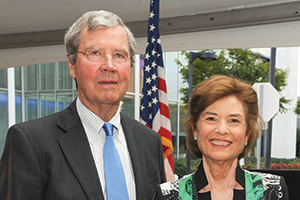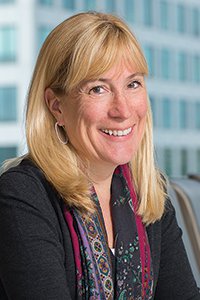Founder and CEO Bill Butcher credits Port City Brewing Co.’s expansion in Alexandria to “a lot of things coming together at the same time.” The lack of industrial-use properties in the area initially forced the company to look throughout the region for a suitable warehouse.
Things started to fall in place, however, when Butcher learned about the Governor’s Agriculture and Forestry Industries Development (AFID) grants from Stephanie Landrum, president and CEO of the Alexandria Economic Development Partnership. Around the same time, he found a warehouse in Alexandria that would accommodate his needs.
Funding from an AFID grant “isn’t used that often in the D.C. area because there aren’t many businesses here that support agriculture and forestry,” says Landrum. She was aware that Port City gets 75 percent of its agricultural ingredients from Virginia producers. For example, its best-selling Belgium-style wheat beer, Optimal Wit, is made from Virginia-grown wheat.
The brewery received a $250,000 AFID grant, which the city will match with local funds. “We talked to Bill about in-kind investments that would help the business, and we are going to be installing a Capital Bikeshare station in front of the brewery,” Landrum says. (Capital Bikeshare provides 3,500 bicycles for rent at 400 stations in the Washington area. The first 30 minutes of each trip are free.)
Port City is spending $2.68 million on its expansion, which is expected to create 26 new jobs. The project will include a new cold storage facility and shipping hub to handle two functions now being done at the brewery’s location where the beer is bottled and kegged. The warehouse will be down the street from that building.
“By moving the cold storage offsite, it opens up more space for upgrades to the bottling line to make it faster and more efficient. We are also bringing in additional fermentation tanks for more brewing capacity,” Butcher says, adding that a second tasting room that can accommodate private parties and events will be added as well.
Port City has averaged 40 percent sales growth each year since it opened in 2011. “This year is on track to be another year of 40 percent sales growth as well,” says Butcher.
In 2015, Port City was named Small Brewing Company and Small Brewing Company Brewer of the Year at the prestigious Great American Beer Festival.
“There were 1,500 breweries that competed, and we won more medals than any brewing company in the country,” Butcher says.
Localities increasingly throughout the country are eager to attract breweries, wineries and distilleries, says Landrum. “It was important to keep Port City in Alexandria because it’s a place for corporate activities, for recreation, and it’s an attraction for visitors.”


 The 24,000-square-foot museum, which has not been named, will include art donations from benefactors Richard and Carolyn Barry. The Barrys also will provide operating support through pledged annual gifts and a permanent endowment from their estates.
The 24,000-square-foot museum, which has not been named, will include art donations from benefactors Richard and Carolyn Barry. The Barrys also will provide operating support through pledged annual gifts and a permanent endowment from their estates. “We did some analyses and determined that segregating the services into two separate groups and spinning one off would unlock shareholder value,” says Lisa Hook the company’s president and CEO.
“We did some analyses and determined that segregating the services into two separate groups and spinning one off would unlock shareholder value,” says Lisa Hook the company’s president and CEO. Neustar will continue to provide number portability services for the Canadian telecommunications industry. The company announced in early August that it has signed a deal with the Canadian LNP Consortium Inc. that lasts until the end of 2018.
Neustar will continue to provide number portability services for the Canadian telecommunications industry. The company announced in early August that it has signed a deal with the Canadian LNP Consortium Inc. that lasts until the end of 2018.